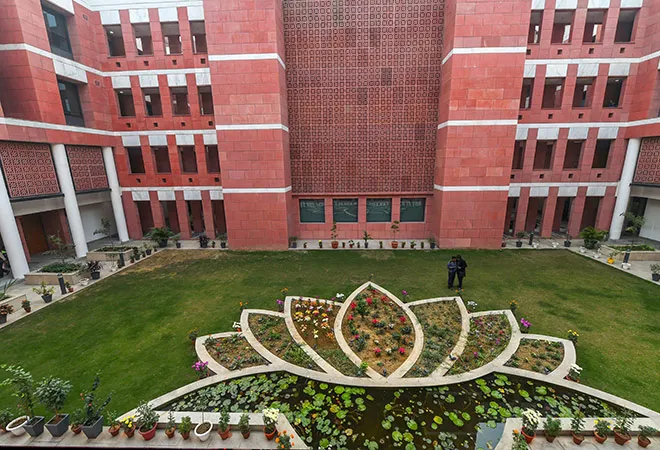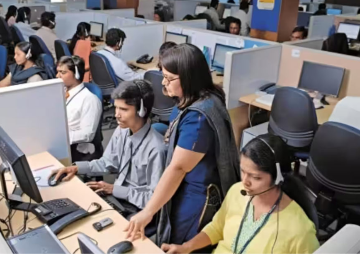The galvanising energy – one new scheme a week – which characterised the Modi years is ironically, also the cause of an uncertain victory this year.
Three simultaneous, mega reform initiatives stand out – reducing the fiscal deficit; implementing the Goods and Services Tax and cleaning out bank balance sheets. Doing just one of these three would have been a gigantic task by itself. Doing all three was over-reach. Something had to give. In this case it was economic growth, employment and equity.
The Modi government unequivocally deepened the process of fiscal consolidation. A fiscal boost to combat the 2008 global financial crisis had pushed the fiscal deficit (FD) to a peak level of 6.5 per cent of GDP in FY 2010 under the UPA. Pranab Mukherjee, as FM, reduced it to 5.8 per cent in FY 2012. Despite crude oil prices hitting a peak of $120 per barrel after P. Chidambaram who took charge, as FM in July 2012 compressed the FD to 4.4 per cent by FY 2014.
Arun Jaitley took up the challenge and brought it down to 3.5 per cent in FY 2017. A short but sharp oil price hike in FY 2018 ensured that the FD remains stuck at 3.4 per cent of GDP till FY 2020. The target of 3 per cent of GDP has now been pushed to FY 2021.
To reduce Union government debt from 48.9 per cent of GDP to a sustainable level of 40 per cent of GDP, the fiscal deficit should be 2.5 per cent of GDP. State governments have assumed Rs 1.5 trillion of debt from their distribution utilities under the UDAY scheme and are similarly likely to be above their sustainable debt levels of 20 per cent of GDP.
With our fiscal stability held captive to the price of imported oil and good rains we have been running on “luck” says D.K. Joshi Chief Economist, CRISIL. The bottom line is we need to push tax revenues to 13 per cent of GDP (currently 12 per cent) to buy some head room for economic reform and social benefits.
Implementation of a pan Indian single tax – the Goods and Services Tax, under deliberation since the last fifteen years – was the corner stone of the Modi government’s strategy for growth with an associated boost for tax revenues.
But designing the appropriate rate proved tough. The states did not agree to a single tax rate. They feared loss of revenue. They agreed only when the Union de-risked them from any revenue loss against the base revenue level, inflated by 14 per cent every year, for five years (till FY 2023).
Adoption of GST with just two rates – a low rate for products of basic consumption like food and a higher rate, of say 15 per cent, for other products, could have boosted demand by reducing retail prices. A moderate GST rate would also have given some breathing room for small industries – which had hitherto been profitable only by evading taxes on production, sales and income – to adjust to the rigours of joining the formal economy. But low tax rates would have exposed the Union government to the risk of inadequate revenue resulting in breaching the FD target due to additional borrowings during the transition period (Fee 2018 to Fee 2022). The desire to be fiscally prudent prevailed.
The economy suffered a down turn; employment suffered and industry bottom lines plunged. Corporate tax grew by just 11 per cent per year over FY 2016-19, below the average nominal economic growth, partly because the tax on income for small industry was reduced from 30 per cent to 25 per cent in FY 2016 with the ceiling on annual turnover being increased gradually up to Rs 2.5 billion to compensate for industrial distress.
The last link of the Modi strategy was to “purify” the economy of grand corruption. The source of grand corruption in India is the publicly owned banks and financial institutions, which control three fourths of the liquid financial resources. Coincidentally the BJP inherited Raghuram Rajan as the Governor of the Reserve Bank of India. A global public intellectual in international finance he brought his formidable reputation to the job.
Keeping inflation in control is a key ingredient of macro-economic stability. Rajan interpreted the RBI mandate to manage inflation as keeping the interest rate significantly higher than inflation. Big Indian business was used to negative real interest rates – nominal rate being below inflation. Over leveraged companies, viable at negative real interest rates, became bankrupt with Rajan’s low inflation, positive, real interest rate regime.
Aligning with the BJP’s keenness to “purify” the banking system Rajan enhanced RBI oversight over the practise of banks “ever greening loans” -restructuring loans in default hoping that better times would improve debt servicing. Active oversight unearthed a pile of bad loans which were more than five times what was routinely assessed earlier.
Gross Non Performing Loans were Rs 12 trillion by March 31, 2018 (7 per cent of GDP). It remains a moot point whether they could have been kicked down the road. But doing so would also have needed public finances to re-capitalise the banks. This would have increased the pressure on the fiscal deficit which was unacceptable.
The result was reduced lending by stressed banks. This triggered downstream pressures in “non-bank financing companies” with low quality assets, which could no longer be collateralised. Construction – a cyclical industry, which goes from a building boom to bust – a traditional beneficiary of cheap loans, took the biggest hit along with millions of middle-class investors never got the homes they had paid for.
Pancaking reform steps, instead of sequencing them carefully, took its toll. In hind sight, focusing on a single big tax reform – the GST, till enhanced tax revenues produced additional fiscal head room, should have preceded the banking system reform.
Risking the growth momentum in a slowing global economy has cost dearly. For the poor, high growth and employment are priorities, which trump “purifying” the economy of corruption.
This commentary originally appeared in The Times of India.
The views expressed above belong to the author(s). ORF research and analyses now available on Telegram! Click here to access our curated content — blogs, longforms and interviews.




 PREV
PREV


